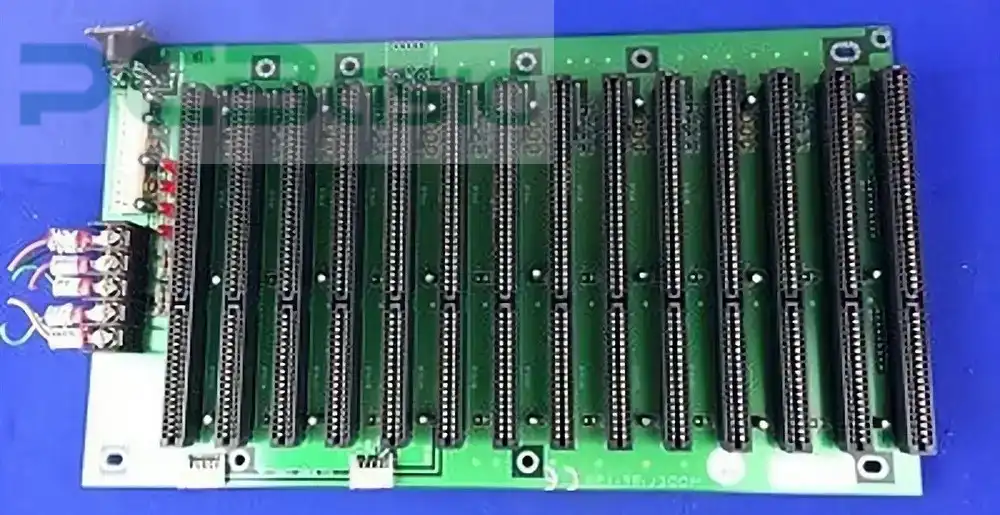Global high-mix volume high-speed Shenzhen PCBA manufacturer

Ru
9:00 -18:00, Mon. - Fri. (GMT+8)
9:00 -12:00, Sat. (GMT+8)
(Except Chinese public holidays)





Global high-mix volume high-speed Shenzhen PCBA manufacturer

Ru
9:00 -18:00, Mon. - Fri. (GMT+8)
9:00 -12:00, Sat. (GMT+8)
(Except Chinese public holidays)





HomePage > Blog > Knowledge Base > A Comprehensive Guide to Backplane PCB
In the world of electronics, a backplane PCB plays a crucial role in connecting and interconnecting various components of a system. Whether it's in a server, a switch, or a computer, backplane PCBs provide the foundation for high-speed data transmission and electrical connectivity between different modules.
But what exactly is a backplane PCB, and how does it differ from other types of PCBs, like motherboards? In this article, we will delve deep into the structure, components, types, applications, and design considerations of backplane PCBs, as well as compare them to motherboards.

A backplane PCB is a type of printed circuit board used primarily to connect different electronic modules within a system. Unlike traditional PCBs, which are typically used to mount and interconnect individual components like chips and resistors, a backplane PCB serves as the backbone or framework for multiple circuit cards, each of which performs a specific function within a larger system.
A backplane PCB contains slots or connectors to interface with these modules, allowing for the transfer of power, signals, and data between them. These PCBs are designed to handle high-speed signals, making them essential for systems that require rapid communication between modules, such as servers and switches.
The structure of a backplane PCB typically consists of a multi-layer board, with each layer serving a specific function. The primary layers include signal layers, ground planes, and power planes, ensuring proper signal integrity and minimizing noise. In addition, the backplane PCB will include connectors and slots that align with the connectors of the modules that will be plugged into it.
A backplane PCB consists of several key components that make it functional and efficient in high-speed applications. Some of the essential elements include:
Backplane connectors come in various shapes, sizes, and configurations, depending on the specific application. Common types of backplane connectors include:

Backplane PCBs come in several variations, each designed for different applications. The main types include:

Backplane PCBs offer several advantages over other types of PCBs, especially in complex, high-performance systems. Some of the key features and benefits include:
Backplane PCBs are found in a wide range of industries, with applications that include:

Designing a backplane PCB requires careful planning and consideration of several factors, including:
A motherboard, also known as a mainboard, is the central circuit board in a computer that houses the primary components, such as the CPU, RAM, and storage interfaces. Unlike a backplane PCB, which is designed to interconnect separate modules, a motherboard integrates most components into a single board. It typically handles low-speed data communication between components, as opposed to the high-speed communication facilitated by a backplane PCB.
|
Feature |
Backplane PCB |
Motherboard |
|
Function |
Provides connectivity for modular components |
Integrates and connects primary components |
|
Primary Use |
Servers, network switches, industrial systems |
Personal computers, laptops, and desktops |
|
Components |
No components, only connectors |
Houses components like CPU, RAM, etc. |
|
Speed |
High-speed data transfer |
Moderate-speed data transfer |
|
Flexibility |
Modular design, easy to expand |
Fixed design, upgrades via external parts |
|
Connector Type |
High-speed backplane connectors |
Standard connectors like USB, HDMI, etc. |
Backplane PCBs are an essential component in many high-performance electronic systems, offering scalability, flexibility, and high-speed connectivity. They serve as the backbone for connecting various modules, whether it's in servers, network switches, or industrial control systems. With proper backplane design, including the selection of the right backplane connectors and consideration of factors like signal integrity and power distribution, backplane PCBs ensure reliable and efficient performance.
Whether you’re designing a server backplane, a switch backplane, or any other type of backplane assembly, understanding the key differences between backplane and motherboard design can help guide your decisions. While both are crucial to modern electronics, backplanes excel in applications where modularity, high-speed communication, and flexible design are key.

Assembly Enquiry
Instant Quote